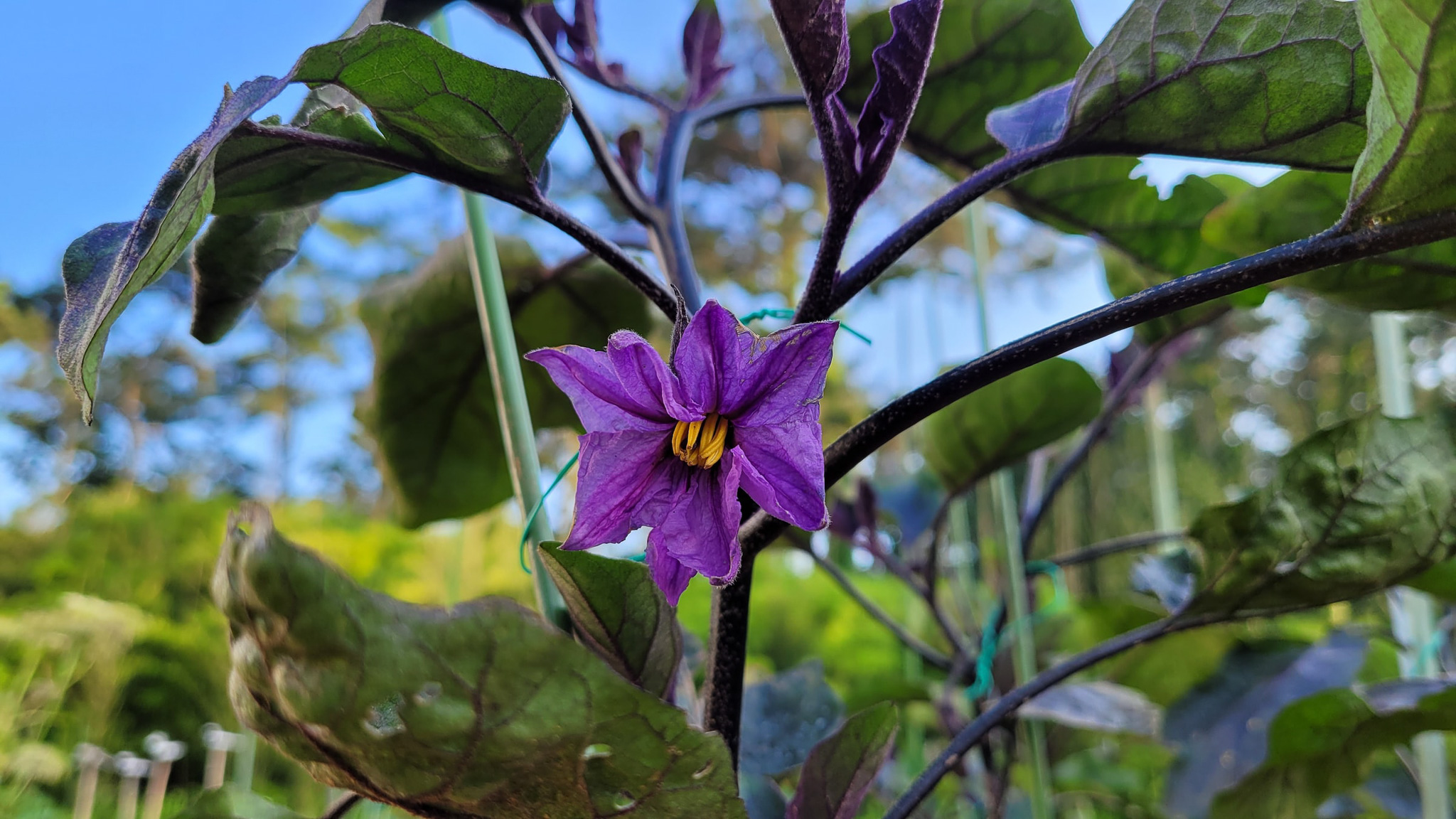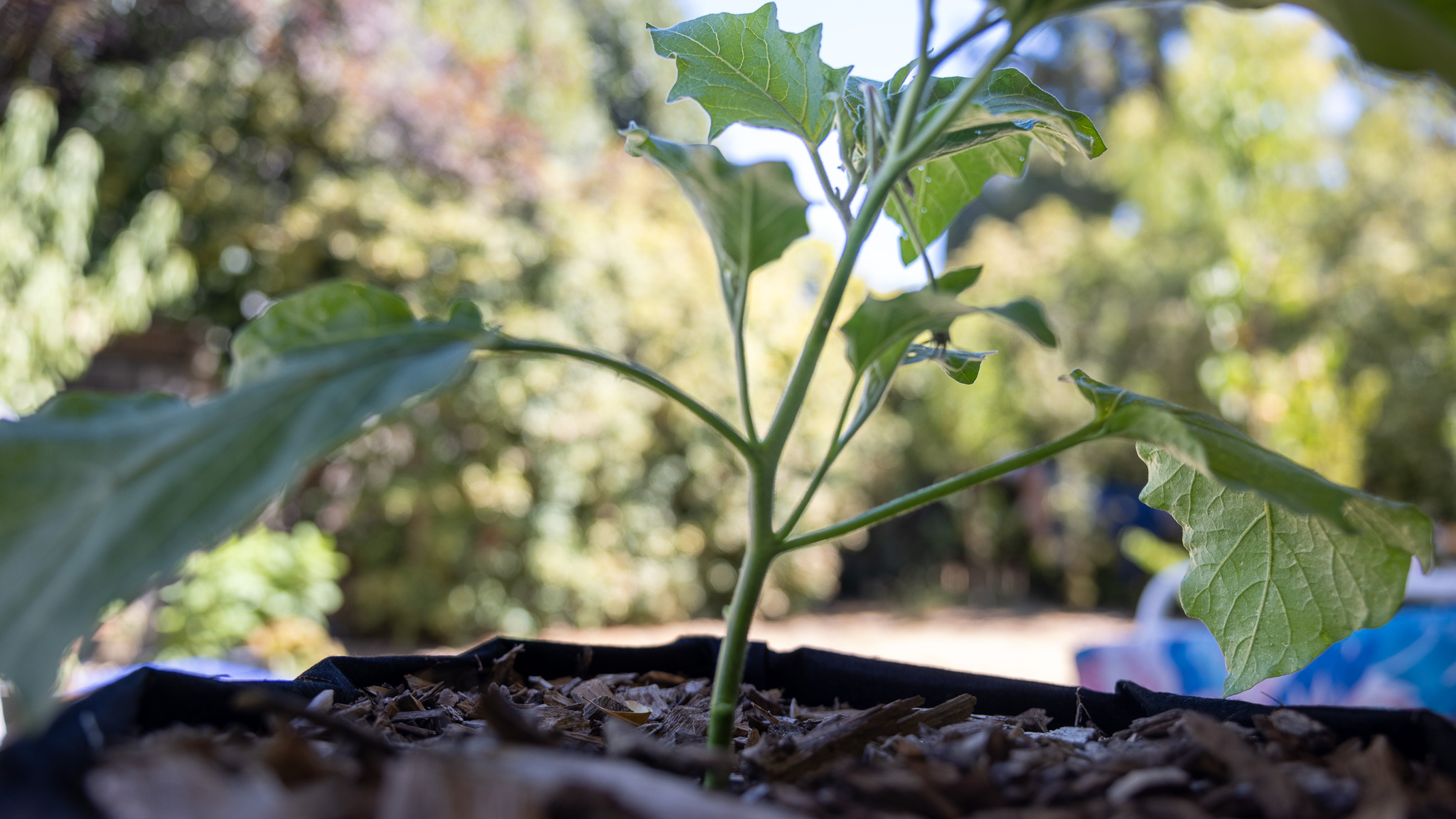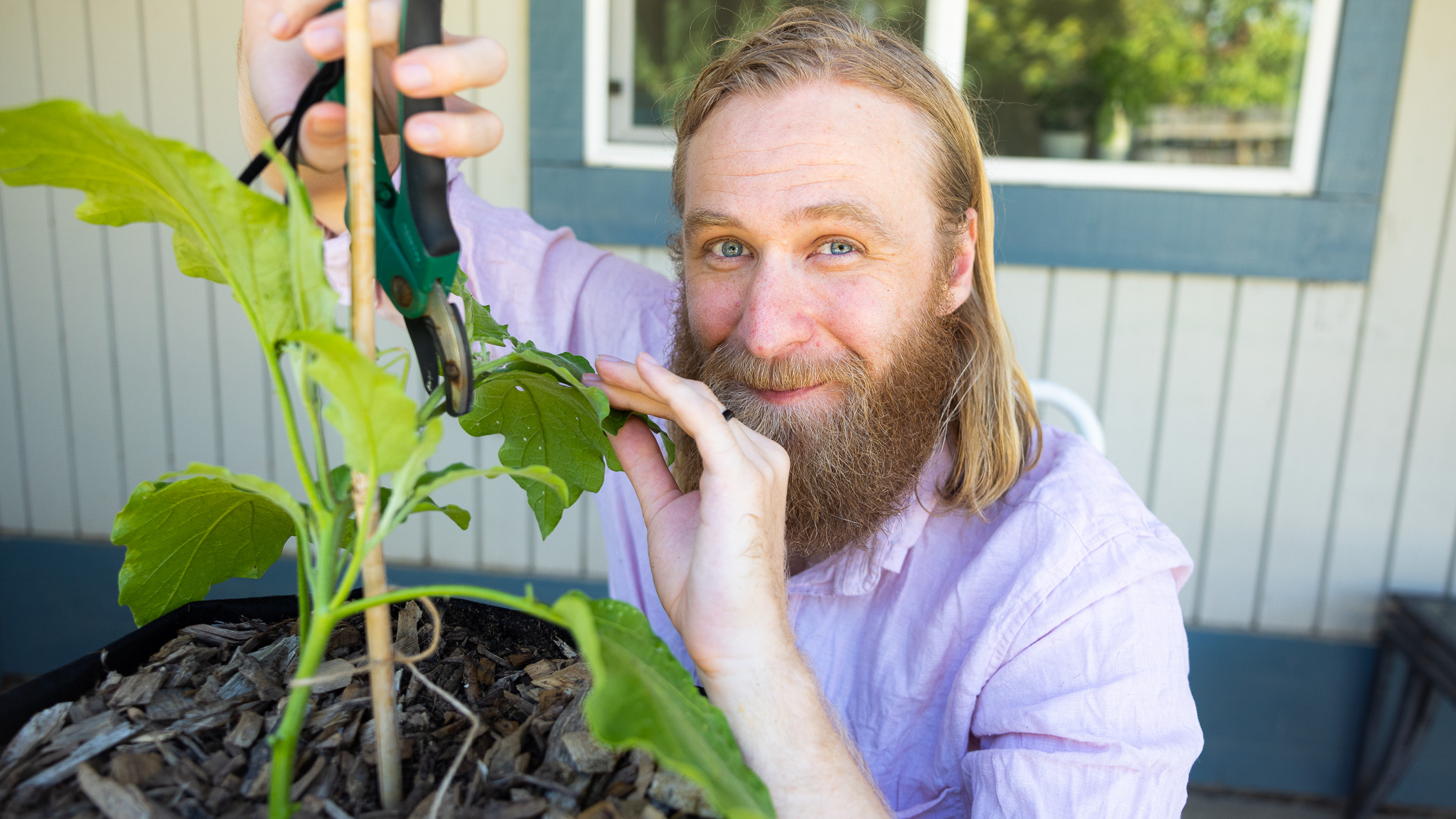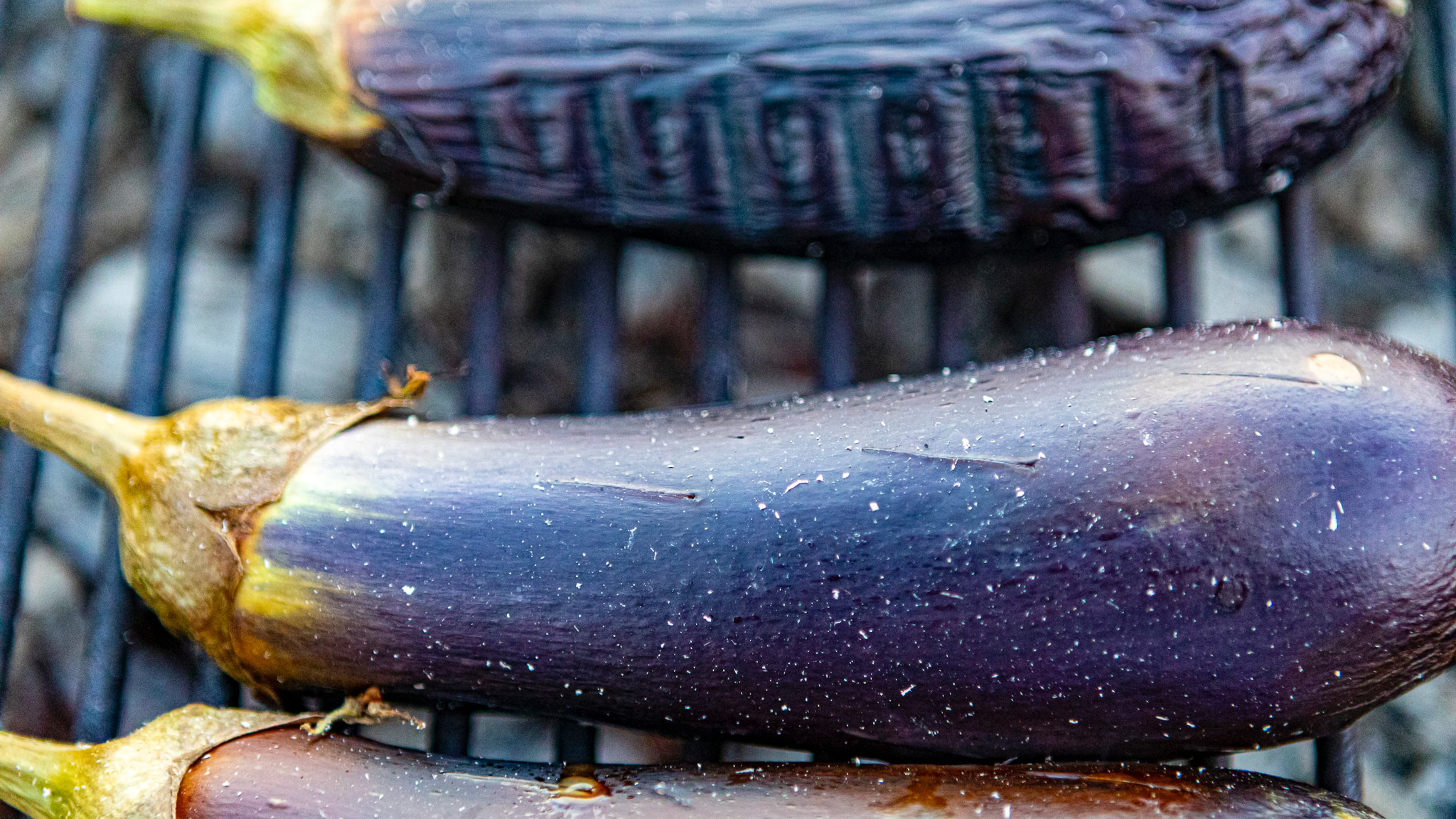If you asked me a few years ago how I prune my eggplants I’d have given you a funny look. Who prunes their eggplants? Has this whole pruning craze gone too far? I mean come on, is it truly necessary to prune an eggplant?
It turns out we should all be pruning our eggplants because there’s a surprising amount of real research evidence for doing so. And I love, love, love little tricks and hacks that are actually backed up by science to help us grow more food at home.
In this article, I’ll explain precisely how to properly prune your eggplants for your best ever harvest.
Pruning Eggplants for Higher Yields & Better Fruit

When your eggplant begins to flower, it’s the perfect age to begin pruning. There are a few types of pruning and we’ll get to them all, but let’s start with the most important type: pruning for yield and better fruit by limiting the number of leaders, or fruiting stems, on the plant.
Our basic goal is to limit each eggplant plant to just three or four leaders throughout its entire lifecycle. I personally shoot for four.
Why do we limit the plant to just a handful of leaders? Because doing so both maximizes its output and helps the plant produce higher quality fruit. Just to reiterate, pruning not only helps the plant produce more eggplants, but those eggplants will be bigger, taste better, and have demonstrably higher nutrient content!
I mean, that’s just cool, right?
How to Prune for Three to Four Leaders
If we were talking about tomatoes, we might leave the primary stem in place plus the desired number of suckers, and prune off any additional suckers. But the structure of an eggplant is a bit different! With eggplants, you can leave suckers in place to serve as a leader OR you can take advantage of the natural branching habit of the plant.
 Suckers on an eggplant grow out of the elbow of a leaf node and the main stem and shoot out with their own set of leaves right as they’re formed.
Suckers on an eggplant grow out of the elbow of a leaf node and the main stem and shoot out with their own set of leaves right as they’re formed.
That’s opposed to branching, where the primary stem naturally splits and forms a “Y” for us. So unlike a tomato pruning strategy, our eggplant leaders can be the result of either that natural branching habit or a mix of the primary stem and suckers we leave on.
Thus, if you happen to accidentally leave on a sucker for a while and it grows nice and strong, it would be a waste to remove it at that point. Or if one of the branches off the main stem breaks or grows in weak, you can go ahead and leave a sucker in there to replace it.
Regardless of which suckers and/or branches you choose to leave in place (remember, only three or four tota!l), I personally like to shape my plant so that all the leaders point outwards away from the stem and all at slightly different angles. That way I can create a kind of upside down cone canopy. Mostly that’s just personal preference, but the cone shape does make it easy to see and hand pollinate the flowers for the biggest harvests.

Before you grab your pruners, you probably want to know how we ended up at just three to four leaders. Why not one? Why not 10?
Well first off, I’ll say that it really works for me and is a popular technique with other experienced eggplant growers. More importantly though, it has been verified by a few different university backed studies like this one. I strongly recommend giving it a quick read!
One last note about maximizing your yields: to get the most out of this aggressive pruning style, you need to space your eggplants very close together - at most 12” apart.
By the way, if you would like a visual reference on how to prune your eggplant leaders, we’ve got a video on it:
Pruning Early Flower Buds
If your plant has flowers on it before you’ve transplanted it out, you want to remove those before transplanting. And in general you want to remove the first set even if the plants are already in the ground. This is really the same advice we give for tomatoes and peppers too!
The reason is to force the plant to skip pouring a bunch of energy into early fruits when we’re better off making it spend that energy on root and foliage growth. One exception is plants that got a late start and won’t have a long season.
Pruning Foliage
I feel kind of bad for lower leaves these days. They get a bad rap. People cut them off left and right. Here’s the thing, those lower leaves are still productive organs of the plant and I want all the productivity I can get to maximize my harvest before winter comes.
Here’s my advice on pruning leaves: it’s a good idea to remove lower leaves if:
- They’re actually touching the ground and you know you struggle with soilborne disease
- They’re in a place where they’re beaten up a lot. For instance, our container eggplants actually tend not to deal with a lot of disease pressure but they get absolutely wrecked by the bugs that live in the mulch anyways. Scratches and abrasions, particularly if they’re lower down can be disease vectors.
- Removing them will help you manage the weeds. We deal with the dreaded bindweed in our main garden and sometimes I need to keep the bottom portion of the stem clear to help me quickly see and remove them from our vegetable plants.
- They start to yellow and wilt and dry up with age. At that point, they’re no longer a net producer of sugars for the plant.
And those are my eggplant pruning hacks, backed by science! I wish you the best, tastiest harvest.

Check out these eggplant recipe ideas when you find yourself with excess eggplants:
